What Is Renters Insurance?
Renters insurance protects you and your belongings while you live in a rented home or apartment. Think of it as “mini homeowners insurance” focused on your personal property and liability. Unlike homeowners insurance, it does not cover the building itself—your landlord insures the structure.
Bottom line: It covers your stuff inside your home and your liability—not the building.
What Does Renters Insurance Cover?
Policies typically include three buckets of protection:
- Personal property: Reimburses you for covered losses to your belongings.
- Liability: Helps pay if someone is injured in your home and you’re legally responsible.
- Loss of use: Pays for short-term housing and related costs if a covered event makes your place unlivable.
Common covered causes (varies by policy):
- Theft and vandalism
- Fire and smoke
- Windstorms and hail
- Falling objects
- Freezing
- Water/steam damage (typically not floods)
Note: Your policy will have limits and deductibles. Review them carefully.
What Isn’t Covered?
Just as important as what’s covered is what isn’t:
- Floods and earthquakes: Usually excluded. Consider separate flood insurance (e.g., NFIP) and an earthquake endorsement if needed.
- Structural damage: The building is the landlord’s responsibility, not yours.
How Much Does Renters Insurance Cost?
It’s generally affordable—often around $10–$25 per month depending on location, building type, coverage amounts, and deductible. Always compare multiple quotes to balance premium, coverage, and deductible.
Does It Cover Moving or Storage?
Moving
Policies don’t cover routine moving costs. If coverage is active before moving day, your belongings may have limited protection in transit (e.g., theft), but not for accidental breakage.
Storage
Some policies include off-premises coverage for items in storage, often with lower limits or time caps. Check your policy specifics.
What About Pets?
Damage your pet causes to your rental (e.g., scratched carpet) is typically not covered. Some policies may extend personal liability to certain pet-related incidents involving guests, but many exclude pet injuries (e.g., dog bites). Read your policy and ask your insurer about options.
Cash Value vs. Replacement Cost
- Actual Cash Value (ACV): Pays the item’s value after depreciation (older items are worth less).
- Replacement Cost (RCV): Pays to replace with a new item of like kind and quality (or covers repairs). Usually higher premiums, better protection.
Confirm which payout method your policy uses—you may be able to upgrade to RCV.
How to Get Renters Insurance
- Estimate your coverage needs: List high-value items and totals.
- Compare quotes: Check well-known insurers and renter-focused providers.
- Balance premium and deductible: A slightly higher premium can mean broader coverage and a lower deductible.
- Confirm limits and exclusions: Especially for valuables, storage, travel, and pet liability.
FAQs
Do landlords require renters insurance?
Many do. Even if it’s optional, it’s a low-cost way to protect your belongings and reduce out-of-pocket risk.
Does renters insurance cover roommates?
Not automatically. Each roommate typically needs their own policy unless your insurer allows multiple named insureds.
How do I prove coverage to my landlord?
Your insurer can email or provide a downloadable proof of insurance that lists policy dates and coverage.
Next Steps
Have questions while you’re apartment-hunting? Contact Bullseye Property Management & Realty or browse our current homes for rent.

 Understanding Your Credit Score?
Understanding Your Credit Score?
Leave a Reply